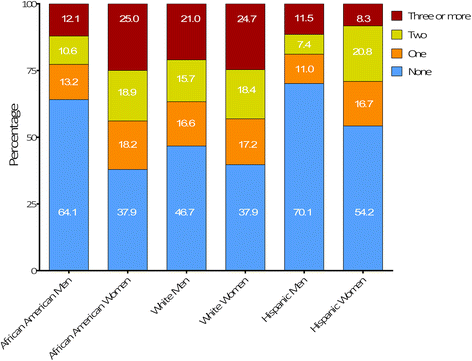Inside the nation's largest mental health institution: a prevalence study in a state prison system
- PMID: 28427371
- PMCID: PMC5397789
- DOI: 10.1186/s12889-017-4257-0
Inside the nation's largest mental health institution: a prevalence study in a state prison system
Abstract
Background: The United States has the highest incarceration rate in the world which has created a public health crisis. Correctional facilities have become a front line for mental health care. Public health research in this setting could inform criminal justice reform. We determined prevalence rates for mental illnesses and related comorbidities among all inmates in a state prison system.
Methods: Cross-sectional study using the Iowa Corrections Offender Network which contains health records of all inmates in Iowa. The point prevalence of both ICD-9 and DSM-IV codes for mental illnesses, timing of diagnosis and interval between incarceration and mental illness diagnosis were determined.
Results: The average inmate (N = 8574) age was 36.7 ± 12.4 years; 17% were ≥50 years. The majority of inmates were men (91%) and white (65%).Obesity was prevalent in 38% of inmates, and 51% had a history of smoking. Almost half of inmates were diagnosed with a mental illness (48%), of whom, 29% had a serious mental illness (41% of all females and 27% of all males), and 26% had a history of a substance use disorder. Females had higher odds of having both a mental illness and substance use disorder. Almost all mental illness diagnoses were first made during incarceration (99%). The mean interval to diagnosis of depression, anxiety, PTSD and personality disorders were 26, 24, 21 and 29 months respectively. Almost 90% of mental illnesses were recognized by the 6th year of incarceration. The mean interval from incarceration to first diagnosis (recognition) of a substance abuse history was 11 months.
Conclusions: There is a substantial burden of mental illness among inmates. Racial, age and gender disparities in mental health care are coupled with a general delay in diagnosis and treatment. A large part of understanding the mental health problem in this country starts at prisons.
Keywords: Aging; Correctional; Inmates; Mental health; Prisoners.
Figures

References
-
- Lauren E, Glaze DK. Correctional Populations in the United States, 2013. 2014.
-
- Prins SJ, Draper L, Center J, John D. Improving outcomes for people with mental illnesses under community corrections supervision: A guide to research-informed policy and practice. 2009.
-
- Torrey EF, Kennard AD, Eslinger D, et al. More mentally ill persons are in jails and prisons than hospitals: A survey of the states. Treatment Advocacy Center Arlington, VA; 2010.
MeSH terms
LinkOut - more resources
Full Text Sources
Other Literature Sources
Medical

